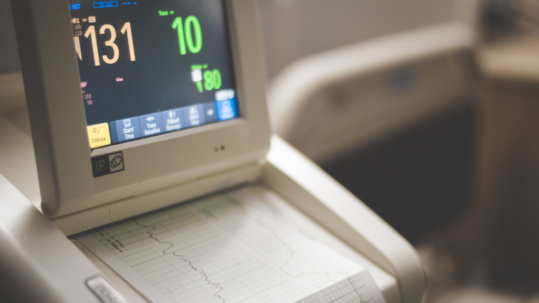
26 Jun POTS Book Review – “Tired Teens” by Dr. Philip Fischer
It blew my mind that our understanding of postural orthostatic tachycardia syndrome (POTS) as a recognized condition is only about 30 years old. While there have been a few labels used to describe similar symptoms/conditions observed, such as “soldier’s heart,” “irritable heart syndrome,” or “orthostatic tachycardia,” it was in 1993 that doctors at Mayo Clinic first began to solidify POTS as a diagnosable condition, separate from anxiety, with specific criteria that could be measured. Since then, lots of data has been gathered about what it is, how it works, who it impacts, what can be done, and the overall patient outlook.
In the midst of navigating my own diagnosis, I was gifted a copy of Dr. Philip Fisher’s book “Tired Teens – Understanding and Conquering Chronic Fatigue and POTS.” Amongst a handful of other doctors, his experience and research have contributed greatly to our current understanding of the diagnostic criteria, prevalence, treatment methods, associated symptoms, and expected outcomes for patients. He has worked with thousands of teens to recover from the debilitating symptoms, and in 2021 published his book, sharing the information he has learned in a way that can be accessed and utilized by strugglers and supporters.
I highly recommend this book. Here’s why.
It explains the “why” behind POTS.
Having a love for human physiology and a seemingly insatiable desire to learn “why”, I appreciated how the book included the mechanisms at play in the body when it comes to POTS. We can talk about isolated facts all day long, but until I understand how the facts work together, I won’t have a long-lasting understanding of what is going on, and how I can adjust my lifestyle to support optimal recovery. In plain language, Dr. Fischer explained the ins and outs of the condition to set the stage for discussion about symptoms, lifestyle changes, and recovery.
Written for teens, this book is easily understood, regardless of previous training in medical jargon. It is careful to explain concepts such as autonomic dysfunction, or orthostatic intolerance in accessible explanations without sacrificing accuracy or muddying the waters. He uses analogies, stories from real patients, and examples to explain tough concepts.
It’s a collaboration between patients, nurses, and doctors.
This book isn’t focused on one doctor’s perspective or theories, but rather, the book is brimming with quotes, stories, and input from all kinds of relevant sources. Throughout the book we read about one POTS patient’s journey towards diagnosis and recovery, and we also get to hear from her parents on how they were able to best support her. We hear from nurses (who often contribute practical information or tips), as well as the things that other doctors are working on that are relevant to the discussion. All of the voices come together, bringing a complex and compelling case for hope.
It doesn’t assume.
This book is incredibly validating. It touches on every POTS symptom and leaves the reader wanting to scream “YES! They get me!” That said, I think it does a great job of recognizing that many conditions have symptoms that overlap, and that there may be alternative reasons that need to be ruled out. This was actually one of my favorite parts of the book, because it gave me a sneak peek into why certain tests were ordered in the beginning stages of my medical journey, and further encouraged me that we are on the right track for recovery.
It’s gentle, yet firm.
Dr. Fischer has mastered the art of making non-negotiable recommendations for recovery while balancing it with encouragement, hope, and motivation. Specifically, I’m talking about exercise. For the average potsy (person living with POTS), exercise feels utterly unattainable. Most potsies already have to carefully budget their energy, and others find themselves bedridden. So hearing that they need to be exercising 6-7 times per week to truly recover is deflating. But through sharing the science behind exercise/movement in contrast to the impact of inactivity, paired with testimonies of real people who have recovered, the prevailing theme is hope.
By the time I had finished the chapter, I got up from lying on the couch and seated myself on my recumbent bike. I was moving, and moving on purpose. The way he presented the information took me from knowing that exercise is a part of recovery, to knowing that exercise is a critical part of recovery – one I am going to take seriously.
It treats each patient as a person.
One thing Dr. Fischer does really well is care for the person that’s in front of him, even if it’s just through words on a page. He knows that many people who develop POTS are weary from the unexplained symptoms, the ignorance of their doctors, or the insensitivity of people who can’t see the symptoms. He understands that the majority of POTS patients have either been told that they are making it all up, or that it’s just anxiety. He takes his time in addressing common complaints of those with autonomic dysfunction and shares stories of patients he has seen. Sometimes there is research to support a particular symptom as a predictable byproduct of POTS, but other times the connection is a bit ambiguous – and he validates them both.
As part of his care towards the readers/patients, he also offers a sneak peek into what it looks like to be assessed at Mayo Clinic. He prepares the reader for the likely tests that will be run, the appointments they’ll have, and the outcomes they can expect. He gives the facts in an unscary and hopeful way. He discusses the lifestyle changes they will be recommended, and what kinds of advice they’ll be given. Most people (including myself) are naturally a bit nervous when embarking on the search for diagnosis, treatment, and recovery. He does what he can to ease the nerves, which I think is a particularly great addition to the book, given the target audience.
Discusses lifestyle adjustments AND medications.
Along with detailing the ways POTS symptoms can be managed through lifestyle adjustments (like drinking water, eating salt, exercising, etc), the book also goes on to talk about each of the medications that are prescribed for POTS, and explains how each one works in the body to minimize symptoms. To me, this is phenomenal. Upon getting an appointment with a doctor to discuss POTS, I was able to have a working understanding of the medication that was being discussed, and how they might help. One might lower heart rate, the other might increase blood volume, and a third might help constrict blood vessels. I felt reassured, knowing these were medications that have been shown to help, and are reasonable options to combat symptoms.
Summary
Overall, this book is excellent. I frequently reference the chapters as I continue my own journey (and recommend it to any interested potsies), but I also think it’s a great resource for friends and caregivers of those with the condition. Its exploration of POTS pathology, practical day-to-day management techniques, and empathetic encouragement make it a top-notch resource to have in my library, and one I wholeheartedly recommend.
-
Making a Full Physical Recovery – A Day-by-Day Miracle
“You should exercise more.” A brutal statement. One I had tried to fulfill on my own, and time and time again, had failed. It was a frustrating piece of advice from my doctor, and felt so out of reach as I navigated my bouquet of chronic illnesses....
27 June, 2024 No comment -
Awesome Recovery News!! And Why I No Longer Plan To Write About My Symptoms
I am so excited to report that after graduating from the 3-week Pain/Symptom Rehabilitation Center at Mayo Clinic in Rochester and continuing the program at home, I am nearly 100% recovered!...
05 March, 2024 3 Comments -
What is the Valsalva Maneuver like?
The Valsalva maneuver is EASILY the most fascinating thing I’ve gotten to do in this entire medical adventure. On the surface, it’s a fairly quick and easy part of autonomic testing, but underneath, it’s one of the coolest and most complicated mechanisms of the human body that I’ve encountered. ...
17 January, 2024 3 Comments






Pingback:Mayo Clinic for POTS - A Quick Overview of My Experience - Kaley Faith
Posted at 16:42h, 02 November[…] approaches things like lifestyle recommendations and medications (read my article on his book here). But when my symptoms were still limiting my daily functionality despite making changes, I knew I […]